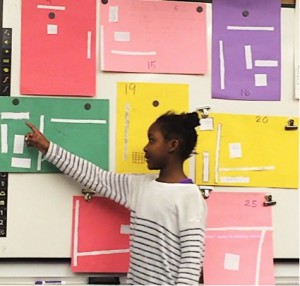Across every grade, a culture of student voice and math discourse is nurtured and encouraged. When students engage in rich open-ended problems, they understand that there is much more to talk about than whether an answer is right or wrong. They make conjectures and provide a rationale for their thinking. Mathematical confidence is built as students gain practice in their ability to construct arguments, and communicate their ideas logically to their peers. Students also learn to ask questions to clarify the work of others, while comparing and making connections between different mathematical approaches to the same problem.
Exploring the Hundreds Chart
When Will We Reach One Half?
Working with a hundreds chart, how many numbers can be covered that contain only the digit 1? If we used the digits 1 and 2, how many numbers could be covered that contain only the digits 1 or 2, or both? By following this pattern:
How many digits are needed before the hundreds chart is half covered?
First grade students became deeply engaged in this open problem. They explored patterns, made conjectures (predictions) as to what digit they would be on when half the 100 board would be covered. They discussed and defined what one half would mean on the hundred chart. In the process of solving this interesting problem, they discovered other numeration concepts along the way. They learned the meaning of a “digit” versus a number. They also gained reinforcement and practice in recognizing, sequencing, writing, and saying numbers up to 100.












